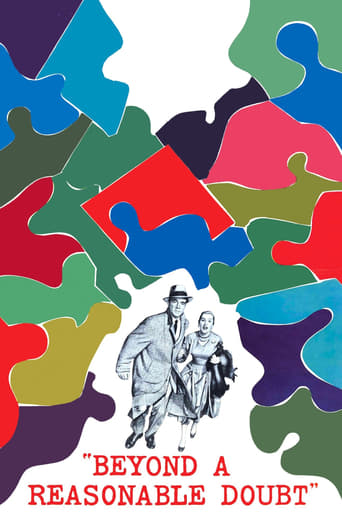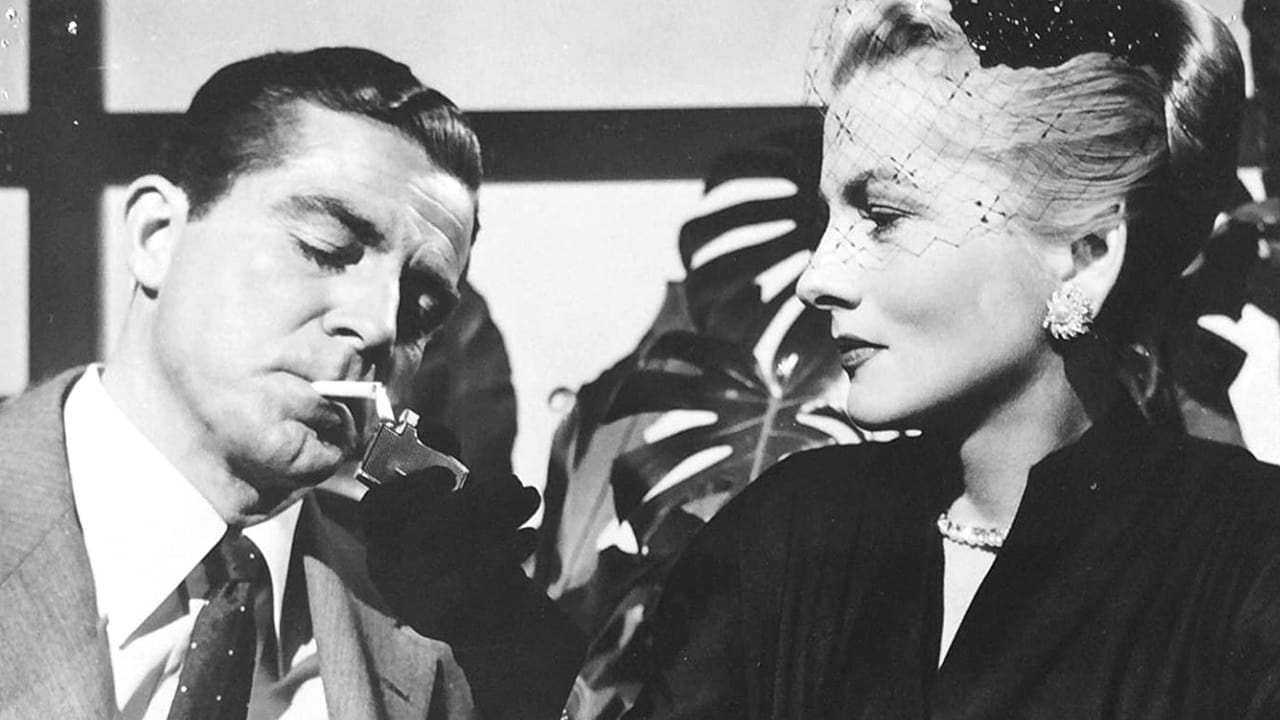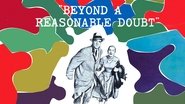edwagreen
What wonderful plot twists here in this film where a writer is convinced by the newspaper owner to have information planted on him so that he may be arrested in a murder, only for the owner to die in a car crash and the defendant have to go it alone in proving his innocence.This all comes about due to the editor's fierce opposition to the death penalty. The irony of irony is that it spark's our guy into quite a bit of action. Dana Andrews is the writer who joins in the plot concocted by Sidney Blackmer. Joan Fontaine, Andrews's fiancé and daughter of Blackmer, doesn't know what to believe at first until she comes around, only to have to reverse herself at film's end.Barbara Nichols really steals the show here in the scenes she is in. With that craggy, annoying, irritating, sarcastic voice, she is the perfect foil for the intentions of Andrews and Blackmer.
secondtake
Beyond a Reasonable Doubt (1956)An early wide screen black and white drama that marks the end of Fritz Lang's American career and also shows the winding down of two great stars, Joan Fontaine and Dana Andrews. The film is no send off, exactly, but it is slightly tired, as if the formula of movie-making needs a twist and it isn't here.That's not the point, of course. This is now the mid-fifties, crisis time for Hollywood, and with widescreen (and widescreen color) movies making a final jab at the rise of television. The plot is sensational, and not too far from what an extended early television drama might try, with mostly interior shooting and a staged (sometimes stagey) presentation. In all it's not Lang's best, and he was a master at both noir/expressionist drama and at getting to the human dilemma of fate and murder. Andrews and Fontaine are not a bad pair—both are matched in calm and sophistication, and beauty, even, though Fontaine seems like an accessory until the very end. Andrews rules the plot, which makes him out to be a writer desperate for a new story. So desperate he's going to pretend to commit a murder just to test the justice system.It's all so outrageous you want to believe it, though your mind says it just wouldn't happen. It's too convenient, and one man's suggestion from the newspaper turns out to be the other man's reality. Enough said!Oddly enough, this is an RKO distribution even after the studio's demise (I don't know the reasons there) but it might point to a less than perfect crew. Certainly the cinematographer, which Lang relied on greatly in earlier films, is no one with credentials. Likewise the editing and writing are fairly routine, even lackluster. And so if a movie that depends on some psychological intensity is really a bit of a grunt effort, whatever the star power involved, it's a bit doomed. So watch this if you are curious about any of the parts. I'm a fan of all three of the principles here, and so had to watch it. But I didn't walk away impressed.
jc-osms
I'm always pleased to catch a Fritz Lang thriller on the TV schedules and was surprised to learn from IMDb that this was in fact his last Hollywood feature. To be honest, it doesn't really compare to his best work, being quite plot-heavy and not perhaps offering him much inspiration for his customary flourishes. That said it does start very sombrely with a near-silent depiction of an electric-chair execution, before the main, convoluted plot-line kicks in with a too blatant anti-capital punishment message. There's little else for the old maestro to do but try to follow the ins and outs of the story, which is too unbelievable and predicated on coincidence to really convince with even the twist at the end just too far-fetched and under-powered to finish the film on any kind of high, plus the complete absence throughout of any other suspect makes the final denouement obvious in the extreme. It is possible to detect Lang pushing the boundaries a little a la Preminger with occasionally risqué dialogue and Dana Andrews interaction with the strippers but "Anatomy Of A Murder" this isn't. The acting is solid enough with Dana Andrews and Joan Fontaine only occasionally looking befuddled by the over-intricacies of the narrative but in the end this isn't one of the great director's finest hours and not a film he'll be best remembered for.
ALauff
Opening with a death-row electrocution and ending at the moment in which a man is presumably sentenced to the same fate, Reasonable Doubt is defined by its audacious, sensationalistic arrangement of events. The story's anti-capital punishment premise—a struggling writer frames himself for murder to prove the fallibility of the death penalty—obviously lends itself to pulpy embellishment, but the film's most spectacular feat is its jaw-dropping last-reel twist, which puts its own purported moral stance through the ringer by positing emotion as the true determiner of principles. Lang baldly manipulates the audience with this reversal, but his purpose, deeper than momentary awe, is to illustrate the eternal conflict in society between humankind's self-preserving unpredictability and its own noble, if constantly undermined, search for unified moral judgments. What ultimately transcends the stodginess of the theoretical conversations between the main players and their necessarily shallow characterizations (the film hinges on befuddlement for a reason) is Lang's empathy for a condemned man, a sensibility fully embodied in two shots: a close-up on a revoked certificate of pardon and the reverse shot of its regarder as he sadly considers freedom for the last time. In retrospect, the story's outcome is established in one of its very first shots, as the guilty party looks unblinkingly upon an execution while the other spectators turn away in disgust. Lang's thesis is easily described after all: the only man who can emotionlessly observe the practice of capital punishment is himself a murderer.


 AD
AD






